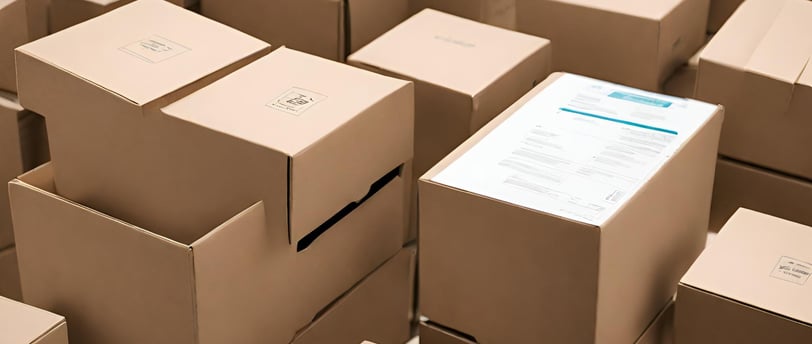10 Eco-Friendly Packaging Tips for Edge Protectors: A Guide to Sustainable Shipping Solutions
Learn how to make your packaging more sustainable and protect the environment with these eco-friendly tips.
1/5/20242 min read
In an era where environmental consciousness takes center stage, businesses are increasingly seeking sustainable alternatives for their packaging needs. As we navigate the complexities of modern commerce, one pivotal aspect often overlooked is the eco-friendliness of the packaging materials themselves. In this guide, we delve into a key component of shipping solutions - edge protectors—and present ten invaluable tips to transform your packaging practices into eco-friendly endeavors. From the use of recycled materials to innovative design strategies, join us on a journey toward more sustainable and responsible packaging solutions for a greener future. Here are some of the 10 Eco-Friendly packaging Tips for Edge Protectors: A Guide to Sustainable Shipping Solutions :
Recycled Materials: Choose edge protectors that are crafted from recycled materials, such as recycled paper or cardboard. This choice reduces the demand for new resources, lessens the environmental impact of manufacturing, and contributes to a circular economy by extending the life of materials.
Biodegradable Options: Opt for edge protectors that are biodegradable, meaning they can naturally decompose over time without causing harm to the environment. This ensures that, when discarded, the protectors break down into non-toxic elements.
Minimalist Design: Adopt a minimalist design for your edge protectors to reduce material usage. A streamlined design not only minimizes waste but also maintains the effectiveness of the protection provided to your products during shipping.
Custom Sizing: Tailor edge protectors to the specific dimensions of your products. Custom sizing minimizes excess material, reducing both waste and the environmental impact associated with the production of unnecessary packaging.
Water-Based Inks: Use edge protectors printed with water-based inks instead of traditional solvent-based inks. Water-based inks are more environmentally friendly, containing fewer volatile organic compounds (VOCs) and minimizing pollution during the printing process.
Reusable Protectors: Invest in edge protectors that are designed for reuse. This not only extends the lifespan of the protectors but also reduces the overall amount of packaging waste generated, making your packaging solution more sustainable.
Local Sourcing: Opt for materials sourced locally to minimize the environmental impact associated with transportation. Local sourcing reduces carbon emissions and supports the community while ensuring a more sustainable supply chain.
Lightweight Materials: Select lightweight yet durable materials for your edge protectors. This choice helps decrease the overall carbon footprint associated with shipping, as lighter packages require less energy for transportation.
Educational Labeling: Include informative labels on your edge protectors, guiding consumers on the proper disposal methods. Encourage recycling or composting, and provide clear instructions to enhance awareness and promote responsible waste management.
Partnerships with Sustainable Suppliers: Collaborate with suppliers who prioritize sustainable practices. Ensure that your entire supply chain aligns with eco-friendly principles, from raw materials to manufacturing processes, promoting a sustainable and comprehensive way of packaging
In this exploration of sustainable packaging tips for edge protectors, we've uncovered a roadmap to eco-conscious shipping solutions. From choosing recycled and biodegradable materials to custom sizing and minimalist designs, businesses can significantly reduce their environmental impact. Integrating water-based inks, lightweight materials, and reusable options further amplifies the commitment to sustainable practices. Local sourcing, educational labeling, and partnerships with sustainable suppliers complete the picture, creating a comprehensive approach to responsible packaging. By adopting these ten tips, businesses can not only enhance the protection of their products but also contribute to a more sustainable and environmentally friendly future.


